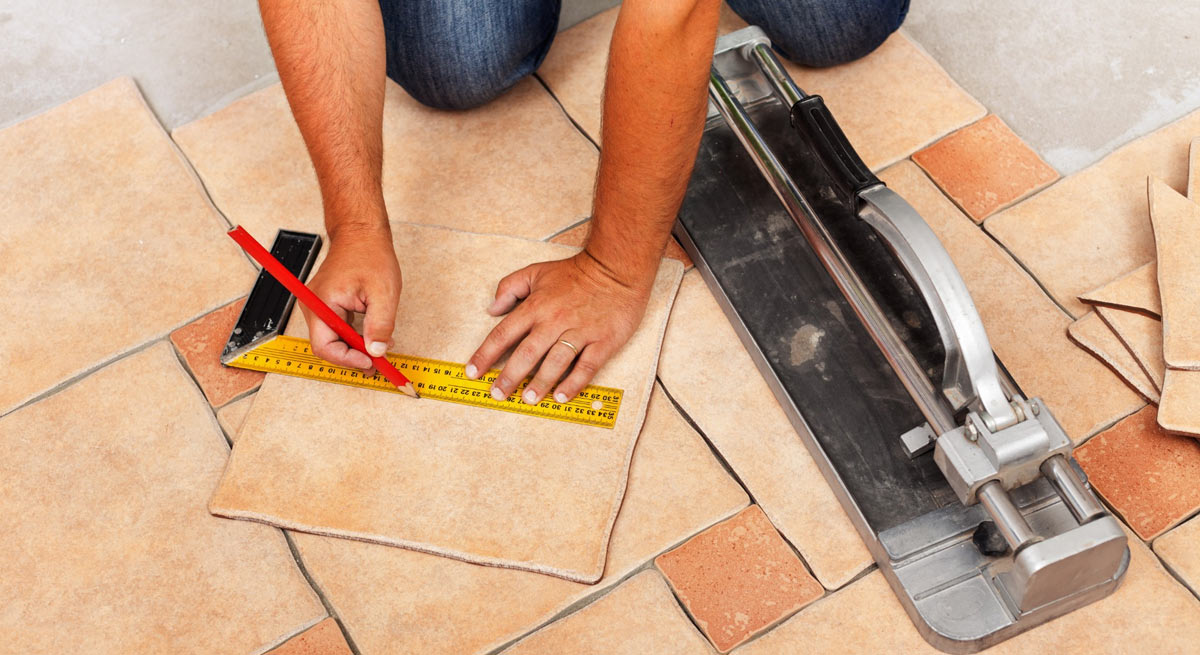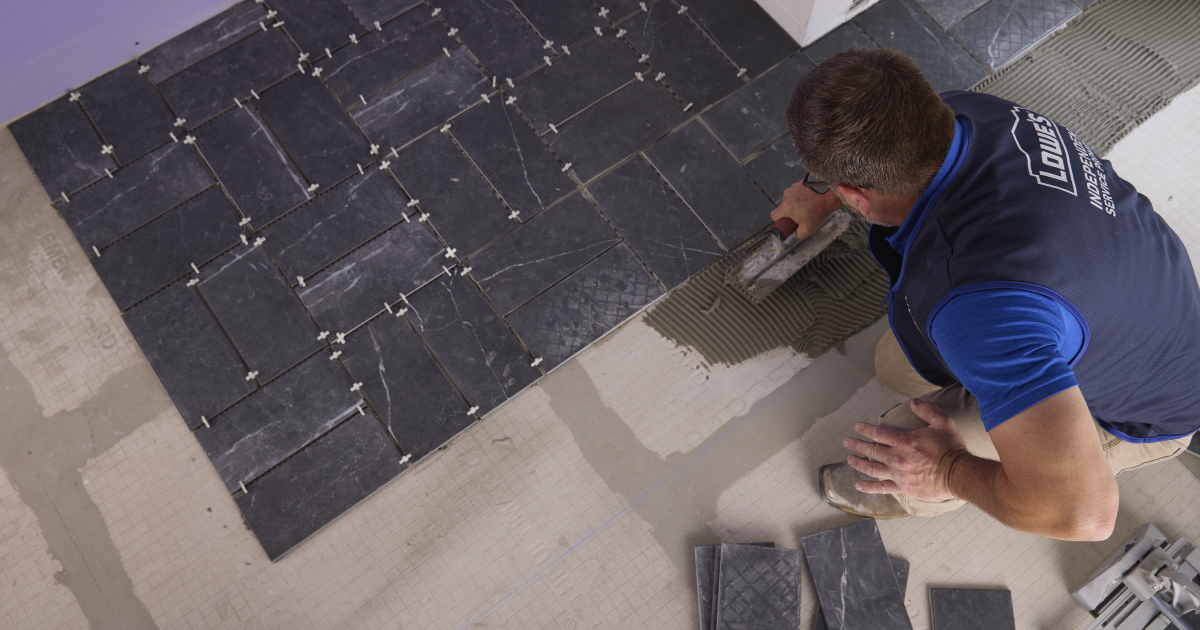Discover the Secrets to Perfect Floor Tile Installment Every Time
Grasping the art of ceramic tile setup entails a series of accurate actions and methods that, when implemented appropriately, can result in a smooth and polished surface. By understanding the tricks behind each action, you can make sure that your floor tile setup not just meets but surpasses your expectations.
Proper Surface Prep Work
Efficient tile installment hinges significantly on thorough surface area preparation to make sure a perfect outcome. The surface must be clean, completely dry, and structurally sound to prevent future problems such as loosened ceramic tiles or split cement.
To ensure correct bond, it is advised to rough up smooth surface areas with sanding or scarifying. Furthermore, applying a primer can improve bonding between the ceramic tile and the substratum adhesive. Irregular surface areas ought to be leveled using a self-leveling substance to avoid lippage and ensure a smooth surface.
Moreover, looking for potential sources of moisture is important, as excess moisture can bring about mold development and damage the tiles in time. Making use of a wetness obstacle or waterproofing membrane layer in damp locations like cooking areas or shower rooms is important to secure the floor tiles from water damages. By thoroughly preparing the surface area prior to floor tile setup, one can develop a resilient and aesthetically attractive tiled area that will stand the examination of time.

Choosing the Right Adhesive
Picking the suitable adhesive is a vital action in ensuring the successful setup of ceramic tiles. The kind of sticky you choose will certainly depend upon numerous elements such as the kind of tile, the substratum material, and the place of the setup. There are different types of adhesives offered out there, including thin-set mortar, mastic, and epoxy.

Epoxy adhesives are water-resistant and very durable, making them suitable for locations prone to moisture such as shower rooms or cooking areas. They are likewise suitable for installing glass or steel ceramic tiles. When selecting a glue, see to it to adhere to the producer's referrals and think about the certain requirements of your ceramic tile setup job.
Precision Reducing Methods
One of the most typical tools used for accuracy cutting in floor tile installment is the floor tile cutter. Tile cutters come in various kinds, consisting of manual ceramic tile cutters, electric wet saws, and handheld ceramic tile cutters. Hand-operated floor tile cutters are ideal for straight cuts on ceramic and porcelain floor tiles, offering clean and exact sides.
Additionally, utilizing a tile nipper allows for comprehensive cuts and forming around barriers or irregular shapes. Wet floor tile saws furnished with ruby blades are exceptional for making curved cuts, cutouts for fixtures, or intricate layouts. In addition, using devices like ceramic tile scribes or glass cutters can assist in scoring and snapping ceramic tiles with accuracy. By mastering these accuracy reducing techniques, floor tile installers can ensure a specialist finish and a visually appealing result in their tile tasks.

Cement Application Tips
When transitioning from precision cutting techniques to grout application in ceramic tile setup, focus to detail and strategy is extremely important for achieving a remarkable coating. Grout offers not only as a useful aspect that fills up the voids between ceramic tiles however also plays a significant function in the overall aesthetic of the setup.
When using grout, work in small sections at once to stop it from drying out also rapidly. Make use of a rubber float to push the grout right into the joints at a 45-degree angle, ensuring complete insurance coverage and condensing the product. Once the cement is used, utilize a wet sponge to clean visit the website the floor tiles, making certain not to get rid of cement from the joints. visit this site right here Ultimately, buff the ceramic tiles with a dry fabric to eliminate any kind of haze and accomplish a polished finish. Adhering to these cement application ideas will result in a professionally installed tile surface that enhances the elegance of any type of space.
Completing Touches and Maintenance
To finish the floor tile installment task successfully, focus to information during the finishing touches and routine upkeep is important. After the grout has actually dried and the floor tiles are securely in place, the last steps entail ensuring that all sides are properly sealed. Using a top quality sealer around the border of the tiled area aids stop water damage and lengthens the life of the installation. Additionally, examining for any loose ceramic tiles or grout and resolving them promptly can prevent extra considerable concerns down the line.
Normal maintenance is crucial to protecting the beauty and functionality of your tiled surfaces. A basic regimen of sweeping or vacuuming followed by wiping with a mild cleaner can help keep your ceramic tiles looking pristine (tile installation austin). For locations that are regularly subjected to dampness, such as kitchen areas or restrooms, routine resealing of cement lines is advised to stop mold and mildew and mildew growth
Conclusion
In verdict, achieving best tile installment every single time calls for focus to detail and correct strategies. By focusing on surface area prep work, choosing the proper adhesive, utilizing accuracy cutting methods, using grout thoroughly, and completing with blog focus to information, you can make sure a professional-looking outcome. Remember to follow these steps and preserve your floor tiles frequently to extend their lifespan and maintain them looking their best.
One of the most typical devices made use of for accuracy cutting in floor tile installation is the ceramic tile cutter. Floor tile cutters come in different types, consisting of hand-operated ceramic tile cutters, electrical damp saws, and handheld floor tile cutters. Manual floor tile cutters are ideal for straight cuts on ceramic and porcelain floor tiles, providing clean and accurate edges. In addition, using devices like tile scribes or glass cutters can help in racking up and snapping ceramic tiles with precision. By understanding these accuracy cutting techniques, ceramic tile installers can make sure a professional surface and a visually enticing result in their ceramic tile jobs.